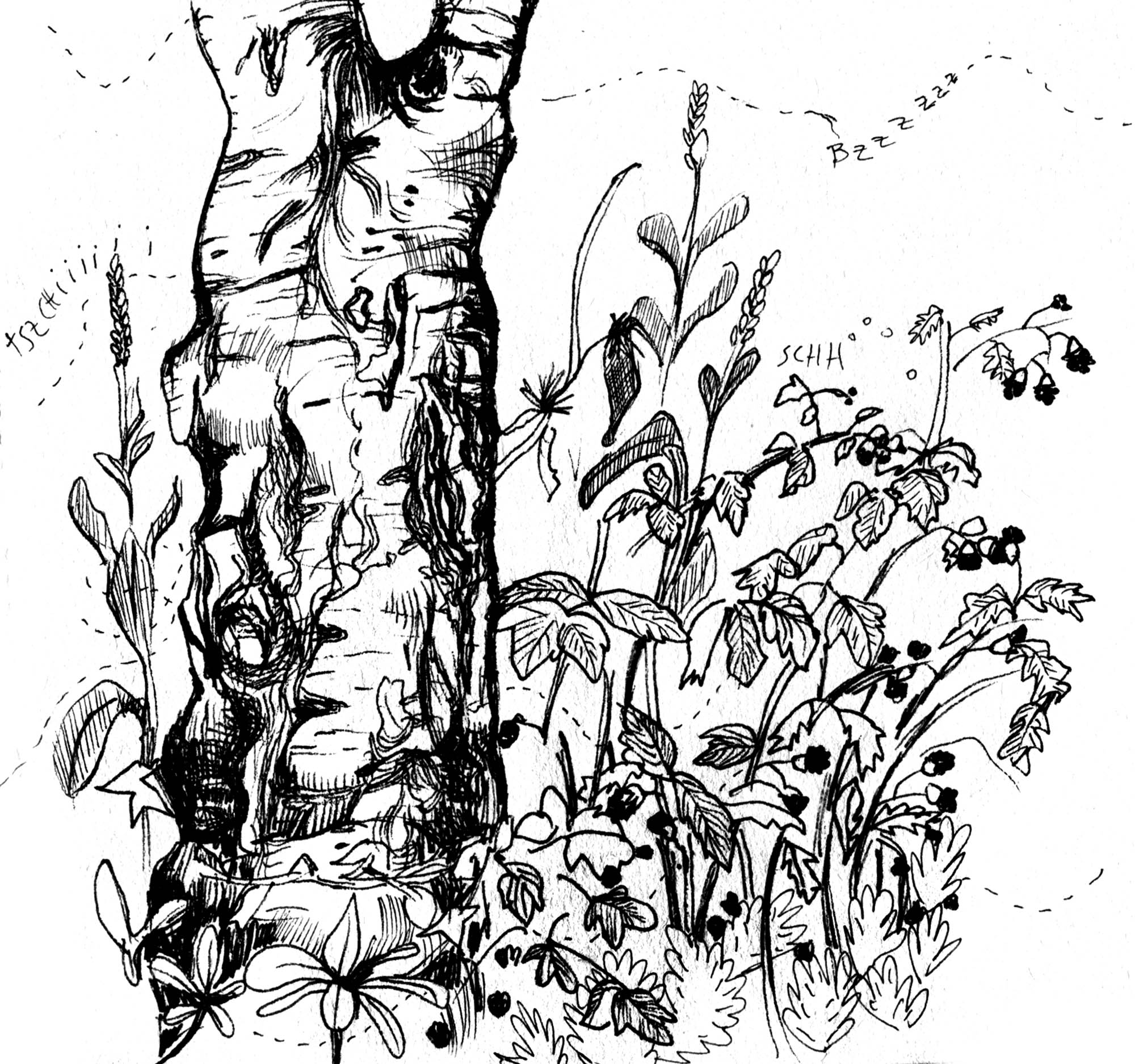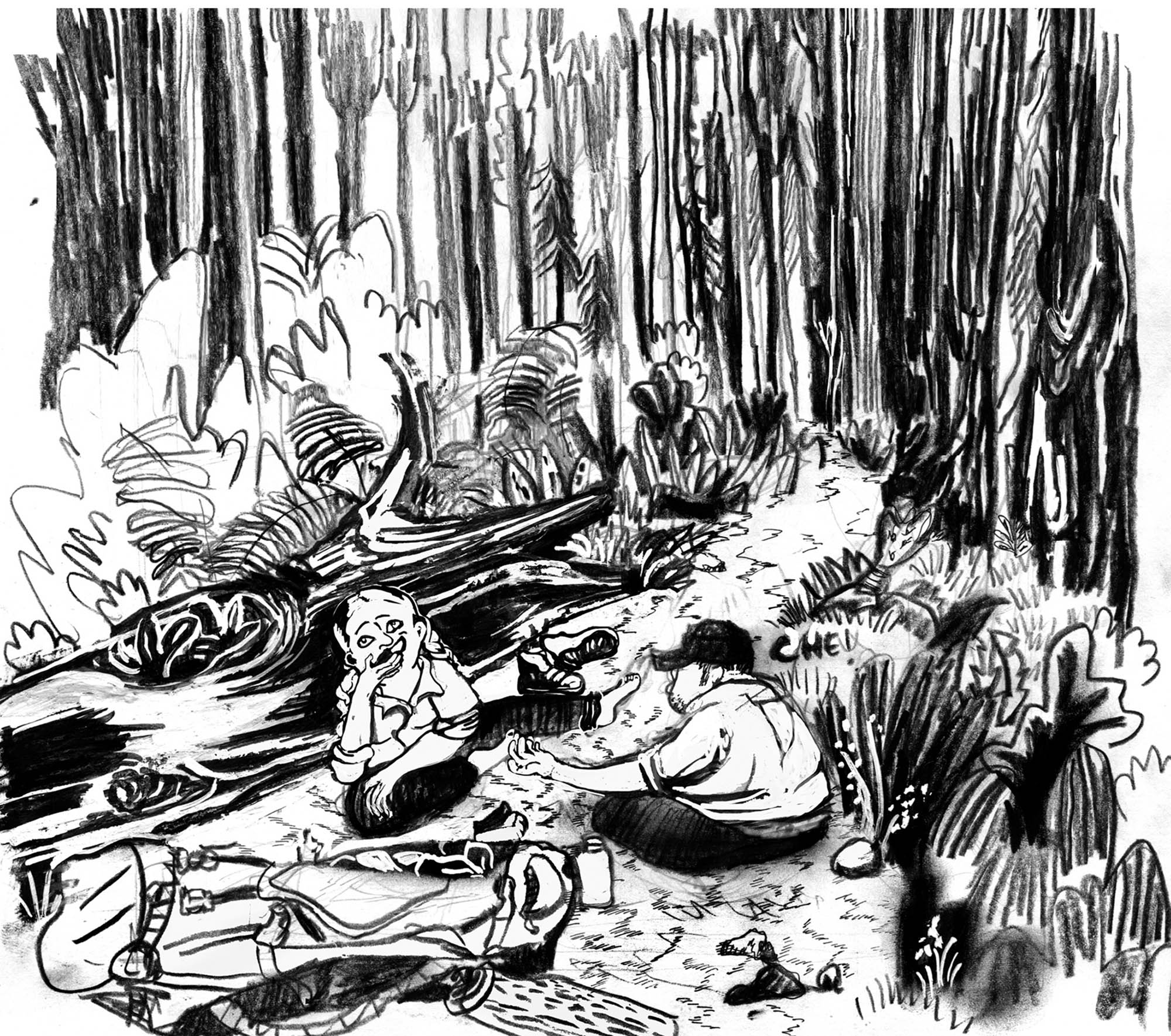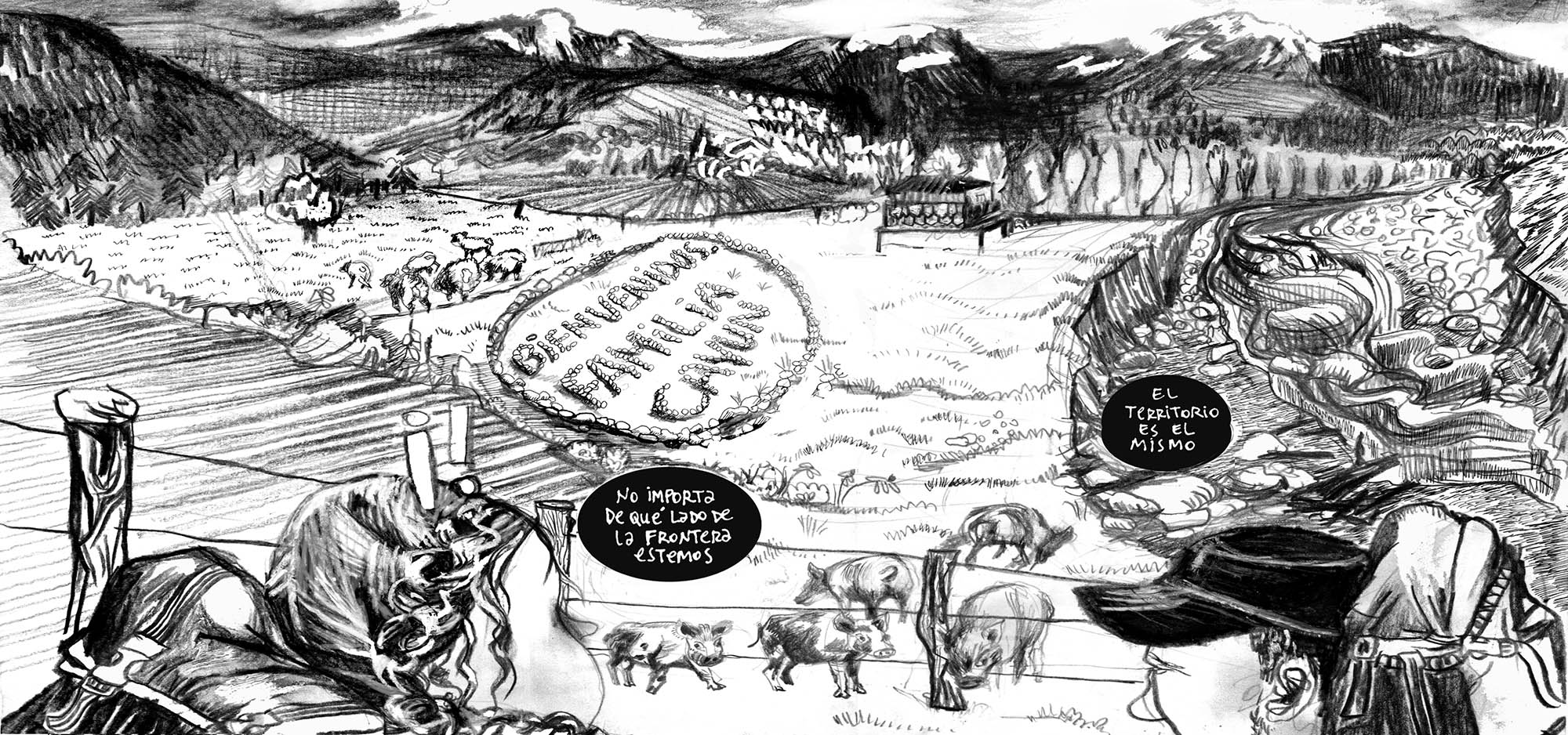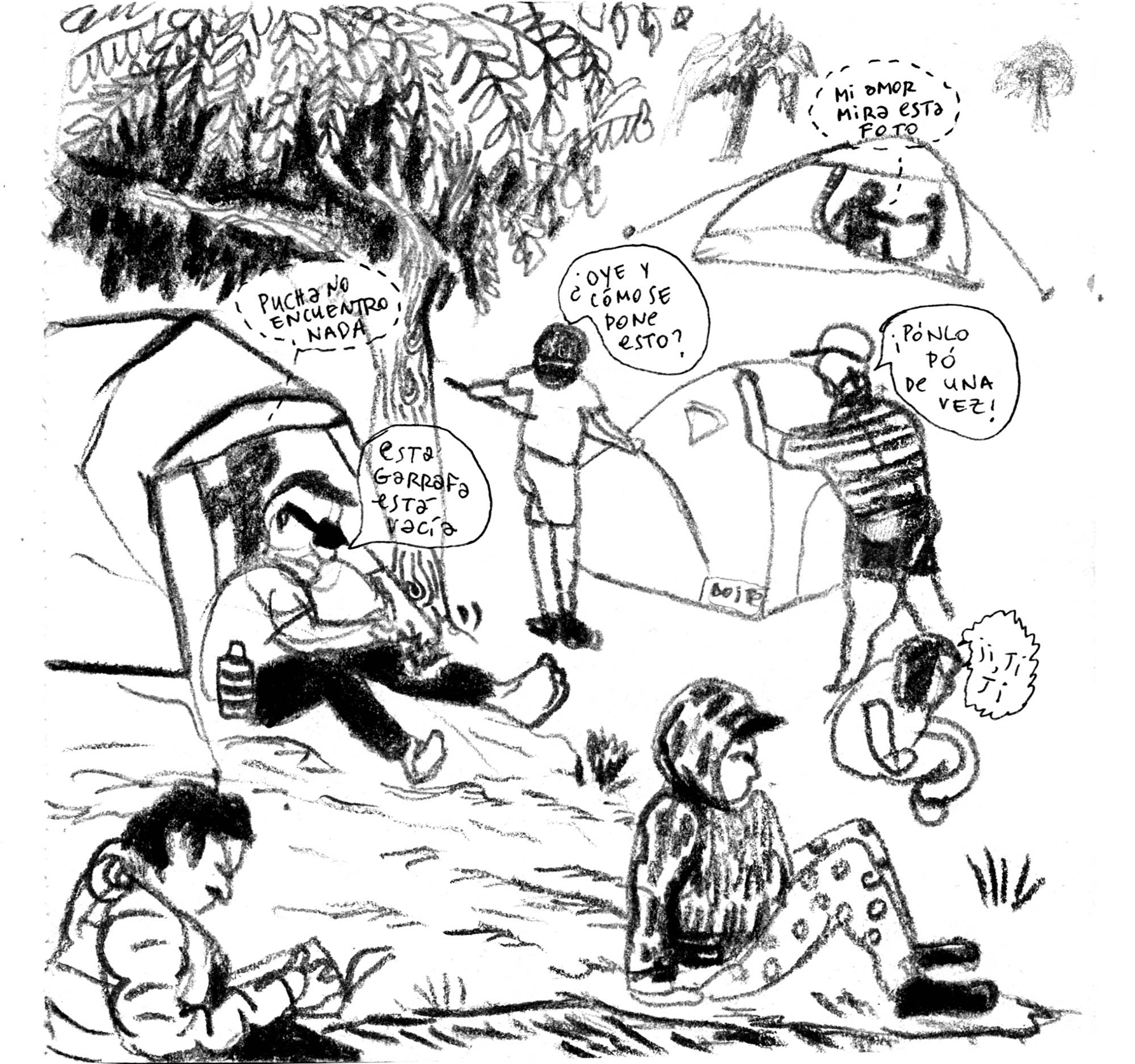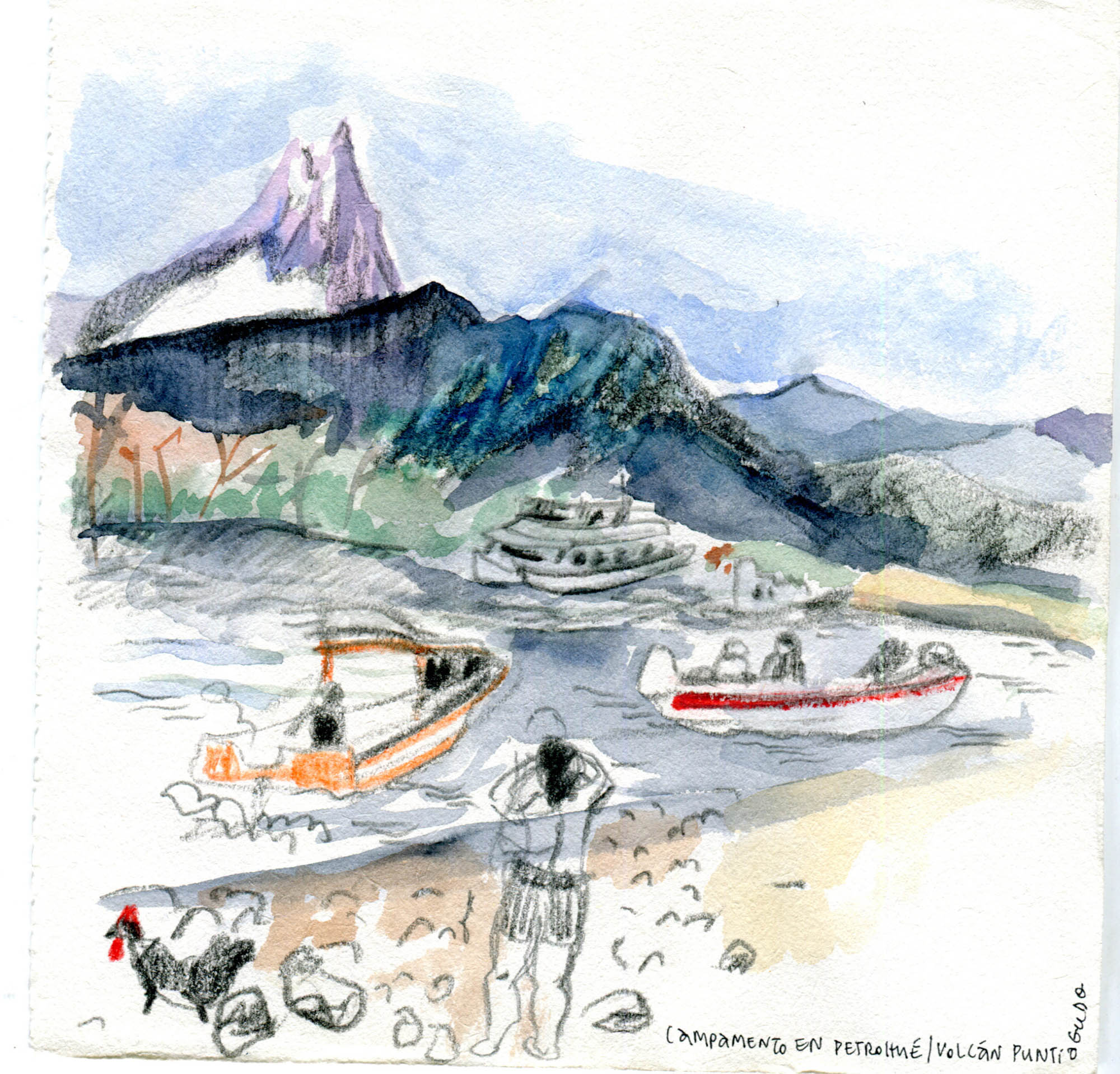Kom tufachi mapu meu mler ftaque neuen
All this land has a great strength
Installation at Kirchner Culture Hall
2021
All this land has great strength explores notions of disciplinary geography and geopolitical ordering based on a finding in the Puerto Bonito Provincial Park in northern Patagonia. Here the nomenclature signs are bilingual, in Mapudungún, the language of the native Mapuche nation, and Spanish, the official language of the border states of Argentina and Chile. In order to inhabit the territorial conception that expresses the relationship of interdependence between the land as territory and human beings as belonging to the land, Azul Blaseotto makes high mountain treks, developing a practice of orientation based on direct observation of the terrain and phytogeography, thus creating a different cartography, different from the official and tourist one. The loop installation of the drawings made in situ proposes to the spectator to read the transit between the towns of Puelo (Argentina) and Petrohué (Chile) in the order he chooses, reflecting on the common territory that takes place in the mountains. That is, what the Mapuche culture designates as wallmapu, the «surrounding territory».
Kom tufachi mapu meu mler ftaque neuen_Toda esta tierra tiene una gran fuerza
Kom tufachi mapu meu mler ftaque neuen
Toda esta tierra tiene una gran fuerza
Instalación en Centro Cultural Kirchner
2021
Esta obra fue distinguida con el Premio Adquisición de Artes Visuales 8M
Toda esta tierra tiene una gran fuerza explora nociones de geografía disciplinar y ordenamiento geopolítico partiendo de un hallazgo producido en el Parque Provincial Puerto Bonito en Patagonia septentrional. En él los carteles nomencladores son bilingües, en mapudungún, la lengua de la nación originaria Mapuche y castellano, lengua oficial de los estados fronterizos Argentina y Chile. Para habitar la concepción territorial que expresa la relación de interdependencia entre la tierra como territorio y las personas humanas como pertenecientes a la tierra Azul Blaseotto realiza travesías de alta montaña desarrollando una prática de orientación basada en la observación directa del terreno y la fitogeografía creando así una cartografía otra, distinta de la oficial y turística. La puesta instalativa en loop de los dibujos realizados in situ propone al espectador leer el tránsito entre las localidades de Puelo (Argentina) y Petrohué (Chile) en el orden que elija reflexionando sobre el territorio común que sobreviene en la montaña. Esto es, lo que la cultura mapuche designa como wallmapu, el «territorio circundante”.



